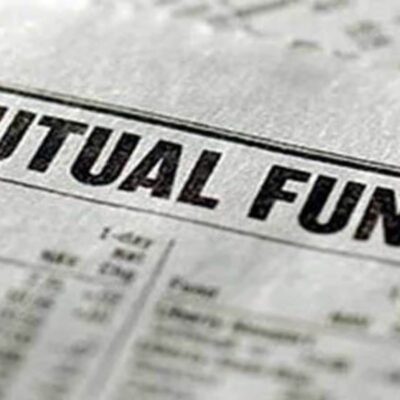It’s common knowledge that bond funds can help dampen portfolio volatility and generate steady monthly income, but what really matters…
It’s common knowledge that bond funds can help dampen portfolio volatility and generate steady monthly income, but what really matters is how much you keep after taxes.
Take the Vanguard Total Bond Market ETF (ticker: BND) for example. With $128 billion in assets under management, this exchange-traded fund (ETF) is a go-to holding for retail investors thanks to its broad diversification and low 0.03% expense ratio.
[Sign up for stock news with our Invested newsletter.]
Over the 10-year period ending March 31, 2025, BND returned 1.5% annualized. Sure, those returns aren’t amazing, but they were largely dragged down by the 2022 bond bear market as interest rates and inflation spiked.
However, if you had to pay taxes on every one of BND’s monthly distributions during that time, Vanguard estimates your after-tax return would have been just 0.3%.
That discrepancy occurs because the underlying bonds in BND aren’t very tax efficient. Its Treasury holdings are subject to federal tax but exempt from state tax, while the corporate bond portion gets hit with both, taxed as ordinary income.
You can avoid this by holding BND in a tax-sheltered account like a Roth IRA or 401(k), but some folks may prefer to reserve that space for higher-returning investments.
If your only choice for fixed-income exposure is a taxable brokerage account, consider swapping in a fund that holds municipal bonds instead.
“These are debt instruments issued by states, cities, counties and other governmental entities to finance public projects like roads, bridges and schools,” explains Nathan Will, principal and head of municipal credit research at Vanguard.
At first glance, the 30-day SEC yield on municipal bond funds might seem underwhelming. But that figure doesn’t tell the full story. To figure out what you’re truly earning, take the fund’s yield and plug it into an online tax-equivalent yield calculator alongside your personal income tax rate.
That will give you the real apples-to-apples figure that reflects what a comparable taxable bond fund would need to yield to match the tax-free income from a municipal bond fund.
Here are seven of the best municipal bond mutual funds and ETFs to buy today:
| Fund | 30-day SEC yield | Expense ratio |
| Vanguard Tax-Exempt Bond Index Fund Admiral Shares (VTEAX) | 3.9% | 0.07% |
| Vanguard Short-Term Tax-Exempt Bond ETF (VTES) | 3.3% | 0.06% |
| Vanguard California Long-Term Tax-Exempt Fund Admiral Shares (VCLAX) | 4.1% | 0.09% |
| iShares Short-Term National Muni Bond ETF (SUB) | 3.2% | 0.07% |
| Fidelity Tax-Free Bond Fund (FTABX) | 3.9% | 0.25% |
| Xtrackers Municipal Infrastructure Revenue Bond ETF (RVNU) | 4.4% | 0.15% |
| Invesco National AMT-Free Municipal Bond ETF (PZA) | 4.1% | 0.28% |
Vanguard Tax-Exempt Bond Index Fund Admiral Shares (VTEAX)
“Municipal bonds are generally a high-quality asset class with a very low historical default rate,” Will explains. “What sets them apart is the combination of strong credit fundamentals and the opportunity to earn tax-exempt income.” Vanguard’s flagship municipal bond fund is VTEAX. It samples the Standard & Poor’s National AMT-Free Municipal Bond Index, providing exposure to more than 9,700 bonds.
“In the event there is an adverse credit event, it will generally only affect a small part of the portfolio due to the effects of broad diversification and the expertise of a firm’s credit teams,” Will says. Nearly 60% of VTEAX’s portfolio is rated AA, which indicates a low risk of default. Investors can currently earn a 3.9% 30-day SEC yield that is exempt from federal income tax. The fund charges a 0.07% expense ratio.
Vanguard Short-Term Tax-Exempt Bond ETF (VTES)
“For the most part, trying to hand-pick individual municipal bonds can be time-consuming and create additional risk,” says Brandon Clark, director of financial planning at Clark Group Asset Management. “In contrast, a municipal bond fund creates more diversification and lowers the chances of default risk by investing in hundreds or even thousands of high-quality tax-exempt bonds.”
VTES is the shorter-maturity alternative to VTEAX. It holds more than 2,600 municipal bonds tracking the S&P 0-7 Year National AMT-Free Municipal Bond Index and maintains 56.4% of its portfolio in AA-rated bonds. However, the average duration of this fund sits at just 2.5 years, making its share price less sensitive to interest rate movements. VTES pays a 3.3% 30-day SEC yield and charges a 0.06% expense ratio.
Vanguard California Long-Term Tax-Exempt Fund Admiral Shares (VCLAX)
“For our clients in California, we have been adding VCLAX,” Clark says. “With income tax rates for California being so high, this can really add a lot of value by avoiding income tax entirely, both federally and on the state level.” That’s because interest from the California-issued bonds held by VCLAX is exempt from both federal and state taxes for California residents. The fund currently pays a 4.1% 30-day SEC yield.
“Even with lower yields than corporate bonds, the after-tax impact of a California municipal bond fund in some cases can be more advantageous by generating greater after-tax returns,” Clark explains. However, investors opting for VCLAX need to be mindful of interest rate risk. With an average duration of 8.3 years, this fund’s net asset value (NAV) can be more volatile than a short-duration fund like VTES.
[READ: 5 Great Fixed-Income Funds to Buy for 2025]
iShares Short-Term National Muni Bond ETF (SUB)
“Some municipal bonds focus on specific states, offering additional advantages for residents of heavily taxed areas such as California, New York or Illinois,” says Michael Ashley Schulman, chief investment officer at Running Point Capital Advisors. “However, this strategy limits the diversification benefits you’d get from investing in a nationwide municipal bond fund.” For a broad focus, consider SUB.
SUB tracks more than 2,500 municipal bonds via the ICE Short Maturity AMT-Free U.S. National Municipal Index. Top states represented in its portfolio include California, Texas, New York, Illinois and Washington. With a short 1.8-year duration, SUB’s price won’t rise much if rates fall, but it also won’t drop as much if rates rise. It charges a 0.07% expense ratio and currently pays a 3.2% 30-day SEC yield.
Fidelity Tax-Free Bond Fund (FTABX)
“Some of the better bond market mutual funds have low expense ratios, no front- or back-end load costs, no 12b-1 marketing fees, performance that closely hugs their benchmark (i.e., low tracking error) and steady or consistent inflows over time,” Schulman explains. These factors help maximize your net returns, minimize unnecessary costs and ensure the fund behaves predictably over time.
FTABX is a great example of a municipal bond fund that hits most of these points. On Fidelity’s brokerage platform, this fund has no transaction fees, sales loads or minimum investment requirements. It charges a 0.44% gross expense ratio, rebated to 0.25% net. The 1,200-plus municipal bonds owned by this fund average out to a 3.9% 30-day SEC yield, which Fidelity estimates to be 6.7% on a tax-equivalent basis.
Xtrackers Municipal Infrastructure Revenue Bond ETF (RVNU)
“RVNU capitalizes on the tax efficiencies of municipal bonds and provides monthly income along with exposure to longer duration, making it an attractive option for taxable investors seeking to diversify their exposure to real assets,” notes Arne Noack, regional investment head of Xtrackers, Americas, at DWS Group. This ETF could be a good lower-risk complement to listed infrastructure equities.
Unlike most municipal bond ETFs that focus on general obligation bonds backed by a government’s taxing power, RVNU targets revenue bonds. These are repaid from the income generated by specific projects or services, such as airports, sewers, tunnels, turnpikes, electric and water utilities, and toll roads. RVNU currently pays a 4.4% 30-day SEC yield and charges a 0.15% expense ratio.
Invesco National AMT-Free Municipal Bond ETF (PZA)
“PZA stands apart from many of its peers given it invests in investment-grade municipal bonds 15-plus years from maturity,” says Jason Bloom, head of fixed income and alternatives ETF product strategy at Invesco. “In the investment-grade municipal bond market, investors are usually compensated with greater yields as they invest in longer-maturity bonds.” PZA currently pays a 4.1% 30-day SEC yield.
But longer duration isn’t the only thing that sets PZA apart. Its benchmark, the ICE BofAML National Long-Term Core Plus Municipal Securities Index, only includes bonds that are exempt not just from federal income tax, but also from the federal alternative minimum tax (AMT). That can be appealing to high-income earners who may otherwise see some of their tax-free income reduced under AMT rules.
[READ: 7 Best Long-Term ETFs to Buy and Hold]
More from U.S. News
9 Highest Dividend-Paying Stocks in the S&P 500
7 High-Yield Covered Call ETFs Income Investors Will Love
5 Best Short-Term Investments for Generating Income
7 of the Best Tax-Free Municipal Bond Funds originally appeared on usnews.com
Update 05/12/25: This story was previously published at an earlier date and has been updated with new information.





